To ace mobile live streaming for special events, start by choosing the right platform for your audience. Test all your equipment thoroughly before going live. Secure a stable internet connection with at least 10 Mbps upload speed. Optimize your camera settings for the best video quality, aiming for 720p or 1080p resolution. Use an external microphone to guarantee clear audio capture. Engage with your viewers through chat, polls, and acknowledging comments. Plan your shot composition carefully, applying the rule of thirds for visually appealing frames. These tips will help you create a professional and engaging live stream. Dive deeper to open up even more streaming success.
Choose the Right Streaming Platform

When selecting a streaming platform, consider your target audience and goals. Different platforms cater to various demographics and content types, so choose one that aligns with your event's purpose. Popular options include YouTube Live, Facebook Live, Instagram Live, and Twitch.
YouTube Live offers broad reach and excellent video quality, making it ideal for professional events or tutorials. Facebook Live excels in community engagement and is perfect for connecting with your existing audience. Instagram Live works well for short, spontaneous streams and attracts younger viewers. Twitch specializes in gaming content but has expanded to include other categories.
Evaluate each platform's features, such as chat functionality, monetization options, and analytics tools. Consider the technical requirements and guarantee your mobile device can handle the chosen platform's streaming demands.
Don't forget to factor in your audience's preferences. Where do they spend most of their time online? Which platform are they most comfortable using? By aligning your choice with your viewers' habits, you'll increase your chances of success.
Lastly, test the platform before your event to familiarize yourself with its interface and capabilities. This preparation will help you avoid technical issues during the live stream.
Test Your Equipment Beforehand
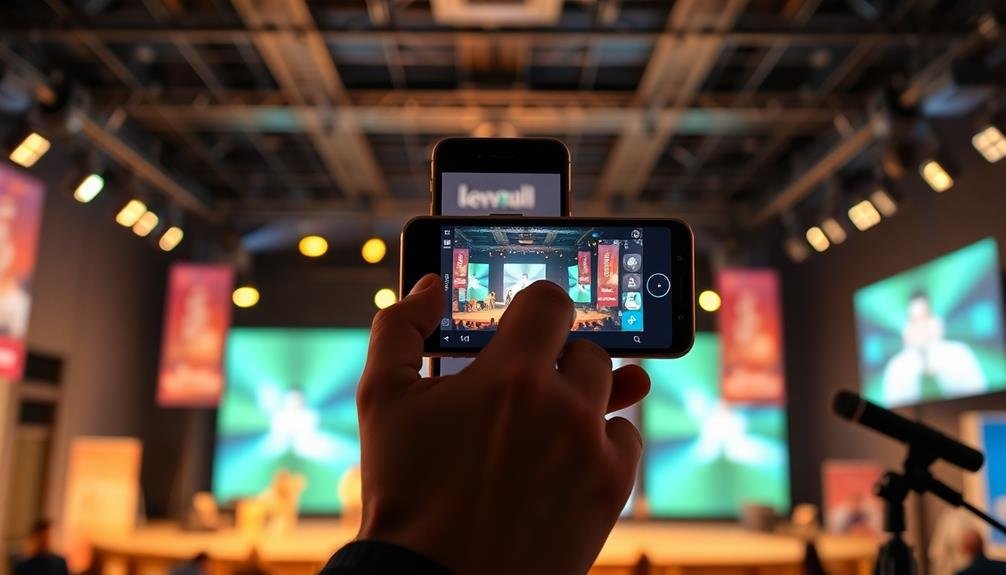
Always test your equipment thoroughly before going live. This vital step can prevent embarrassing technical issues during your stream.
Start by checking your smartphone's battery life and confirming it's fully charged or connected to a reliable power source. Test your internet connection's speed and stability, as a weak signal can lead to buffering or disconnections.
Next, examine your camera and microphone. Make sure your lens is clean and your audio is clear. If you're using external equipment like lights or a separate mic, verify they're working correctly and securely attached.
Run a test stream on your chosen platform to check video quality, sound levels, and overall performance.
Don't forget to review your streaming app's settings. Adjust resolution, bitrate, and other parameters to optimize your stream quality while considering your network capabilities. If you're planning to use overlays, graphics, or screen sharing, test these features as well.
Lastly, prepare a backup plan. Have a secondary device ready in case your primary phone fails, and consider having a mobile hotspot as a backup internet source.
Ensure Stable Internet Connection
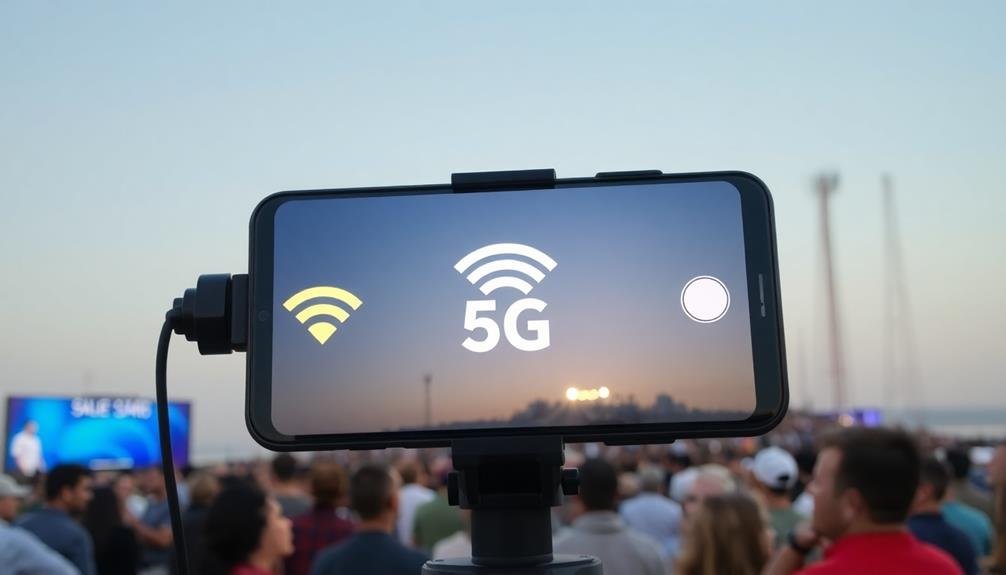
In light of the importance of a stable connection, ensuring reliable internet is essential for successful mobile live streaming. You'll want to test your connection speed before going live, aiming for at least 10 Mbps upload speed for high-quality streaming. If possible, use a wired connection or a dedicated Wi-Fi network to minimize interruptions.
Consider using a mobile hotspot or backup internet source in case your primary connection fails. It's also wise to inform your audience about potential connectivity issues beforehand, so they're prepared for any disruptions.
Here's a quick reference guide for internet stability:
| Connection Type | Pros | Cons |
|---|---|---|
| Wired (Ethernet) | Stable, fast | Limited mobility |
| Wi-Fi | Convenient, widely available | Can be unreliable |
| 4G/5G | Mobile, good coverage | Data caps, signal variability |
| Mobile Hotspot | Backup option, portable | Limited bandwidth |
To further enhance your stream's stability, close unnecessary apps and disable automatic updates on your device. This will free up bandwidth and processing power for your live stream. Remember, a stable connection is vital for maintaining viewer engagement and delivering a professional-quality broadcast.
Optimize Camera Settings
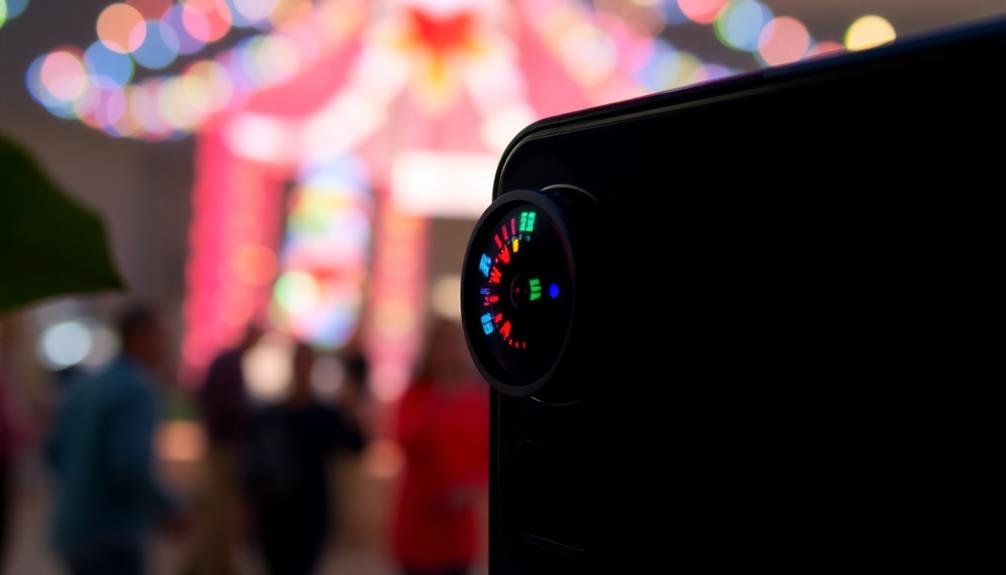
Camera settings play an essential role in the quality of your mobile live stream. To optimize your camera for live streaming, start by adjusting the resolution. While higher resolutions offer better quality, they also require more bandwidth. For most mobile streams, 720p or 1080p is sufficient.
Next, focus on frame rate. A higher frame rate, like 60fps, provides smoother motion but demands more processing power. For static scenes, 30fps works well, while 60fps is ideal for action-packed events.
Pay attention to your camera's exposure settings. Use auto-exposure for changing light conditions, but manually adjust it for consistent lighting. Experiment with ISO settings to balance brightness and noise in low-light situations.
Don't forget about white balance. Auto white balance usually works well, but you can set it manually for more accurate colors in tricky lighting scenarios.
Lastly, consider your camera's field of view. Wide-angle lenses capture more of the scene but may distort the edges. Test different angles to find the best composition for your live stream.
Use External Microphone for Audio
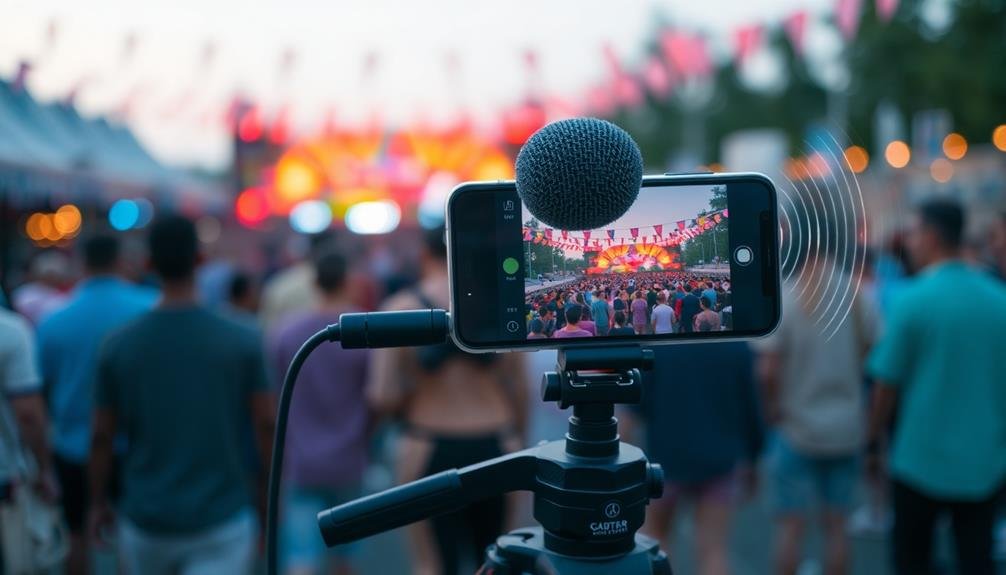
Audio quality is often overlooked in mobile live streaming, but it's just as essential as video. Your smartphone's built-in microphone mightn't capture sound clearly, especially in noisy environments or when you're far from the subject. That's where an external microphone comes in handy.
Invest in a quality external microphone that's compatible with your mobile device. Options include lavalier mics for clear voice pickup, shotgun mics for directional sound capture, or wireless systems for greater mobility.
Make certain to test your chosen microphone before the event to guarantee it works seamlessly with your streaming setup.
When using an external mic, position it correctly for ideal sound pickup. For interviews, clip a lavalier mic close to the speaker's mouth. If you're capturing ambient sound, use a shotgun mic pointed towards the source.
Always monitor audio levels during your stream to avoid distortion or low volume.
Remember to bring spare batteries or a portable charger for your microphone. Some external mics may drain your phone's battery faster, so consider using a power bank to keep your device charged throughout the stream.
Engage With Your Audience
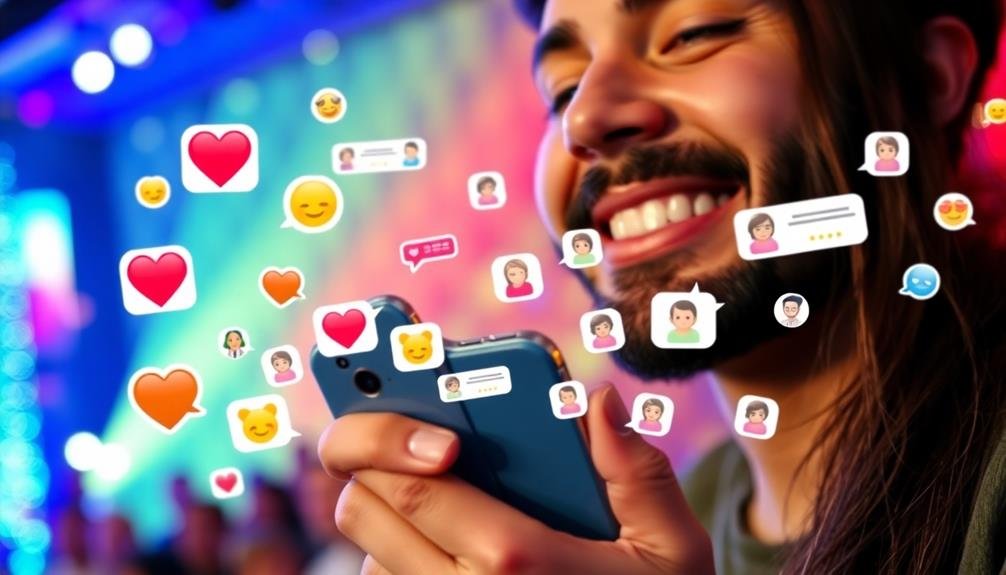
Once you've got your audio sorted, it's time to focus on your viewers. Engagement is key to a successful live stream, so make sure you're interacting with your audience throughout the event.
Start by greeting viewers as they join, addressing them by name if possible. Encourage them to ask questions or leave comments, and respond in real-time to create a two-way conversation.
Use polls or quizzes to involve your audience and gather their opinions. This not only keeps them engaged but also provides valuable feedback.
Don't forget to acknowledge super chats or donations if your platform supports them. Share behind-the-scenes moments or exclusive content to make your viewers feel special and part of the event.
Keep an eye on the chat and address any concerns or technical issues promptly. If you're covering a large event, consider having a moderator to help manage the chat and flag important messages for you.
Remember to maintain a balance between focusing on the event and interacting with your audience.
Plan Your Shot Composition
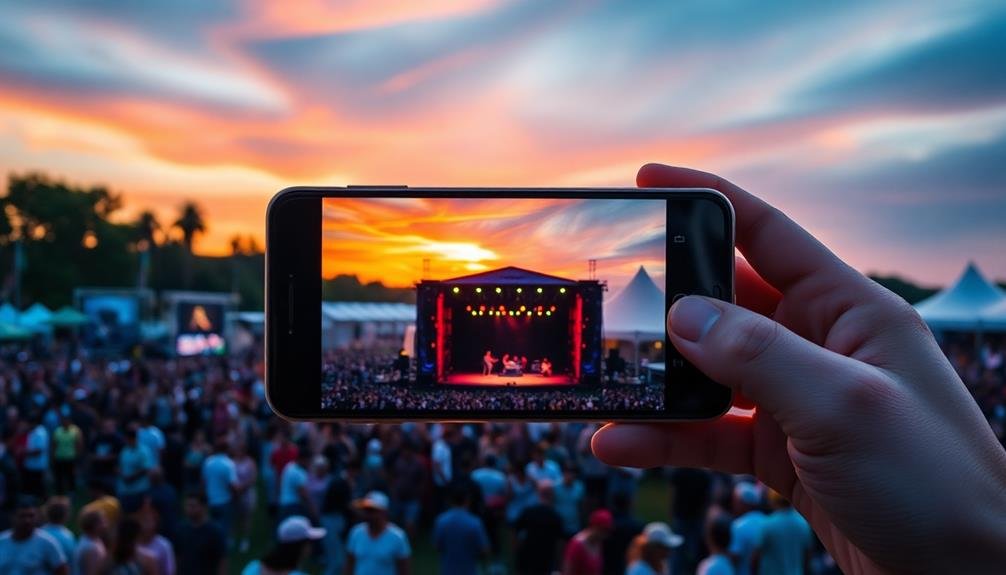
Your shot composition can make or break your live stream. When planning your shots, consider the rule of thirds. Divide your screen into a 3×3 grid and place key elements along these lines or at their intersections. This creates a more visually appealing and balanced frame.
Pay attention to your background. Choose a setting that's relevant to your event but not distracting. If you're indoors, confirm the area behind you is tidy and well-lit. For outdoor streams, be aware of potential interruptions or unwanted elements in the frame.
Vary your shots to keep viewers engaged. Mix up close-ups, medium shots, and wide angles when appropriate. If you're showcasing a product or demonstrating something, use close-ups to highlight details. For interviews or discussions, medium shots work well to capture facial expressions and body language.
Consider your camera's height and angle. Shooting from slightly above eye level is often flattering for subjects. Avoid unflattering low angles or extreme high angles unless they serve a specific purpose.
Remember to keep your camera steady, using a tripod or stabilizer when possible.
Frequently Asked Questions
How Long Should a Live Stream for a Special Event Typically Last?
You'll want to keep your special event live stream between 30-90 minutes. It's long enough to engage viewers but not so lengthy that you'll lose their attention. Remember, you can always extend if engagement's high.
What's the Best Way to Monetize a Live Stream of a Special Event?
You can monetize your special event live stream through sponsorships, ads, or viewer donations. Consider selling virtual tickets, offering exclusive content, or creating merchandise. Don't forget to promote these options before and during the stream.
How Can I Protect My Live Stream Content From Unauthorized Use?
You can protect your live stream content by using watermarks, encryption, and digital rights management tools. Implement geo-blocking, require user authentication, and issue takedown notices for unauthorized use. Monitor your stream and educate viewers about copyright policies.
Should I Hire a Professional Crew for Streaming a Large-Scale Special Event?
You should consider hiring a professional crew for large-scale events. They'll bring expertise, equipment, and manpower to guarantee smooth streaming. However, weigh the cost against your budget and event complexity before deciding.
What Are the Legal Considerations When Live Streaming Copyrighted Music at Events?
You'll need to obtain proper licenses for copyrighted music before streaming. Contact performing rights organizations like ASCAP or BMI for event licenses. Be cautious with background music, as it can trigger content ID systems on platforms.
In Summary
You've now got the tools to make your mobile live stream a success. Remember to choose your platform wisely, test everything, secure a strong connection, and optimize your camera and audio. Don't forget to interact with viewers and plan your shots. With these tips, you'll create engaging, high-quality streams that capture your special events perfectly. So go ahead, start streaming, and share your experiences with the world!

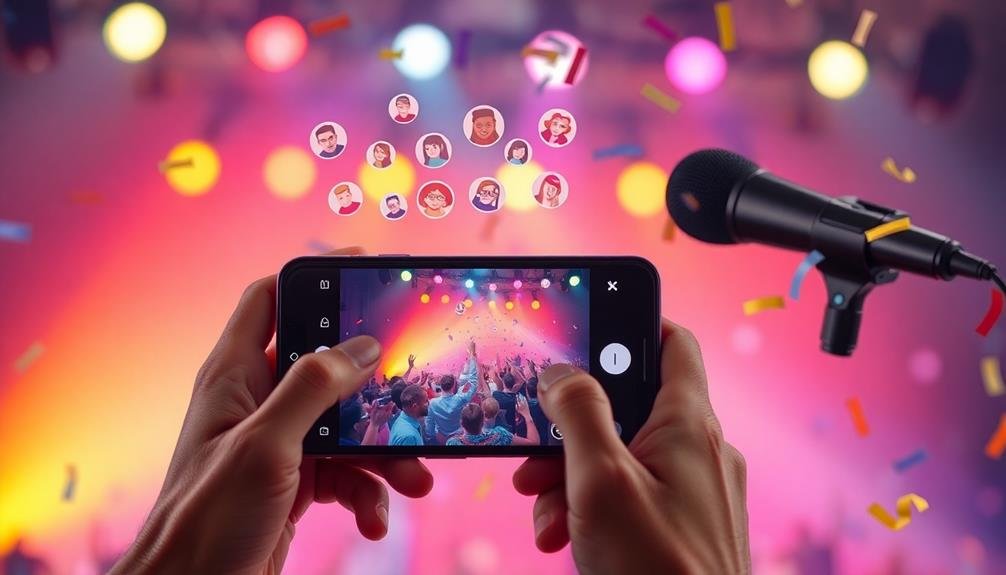



Leave a Reply